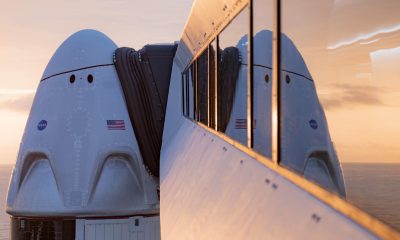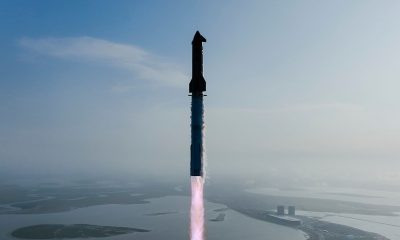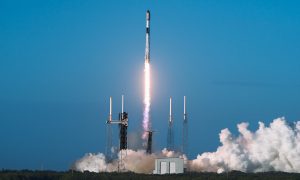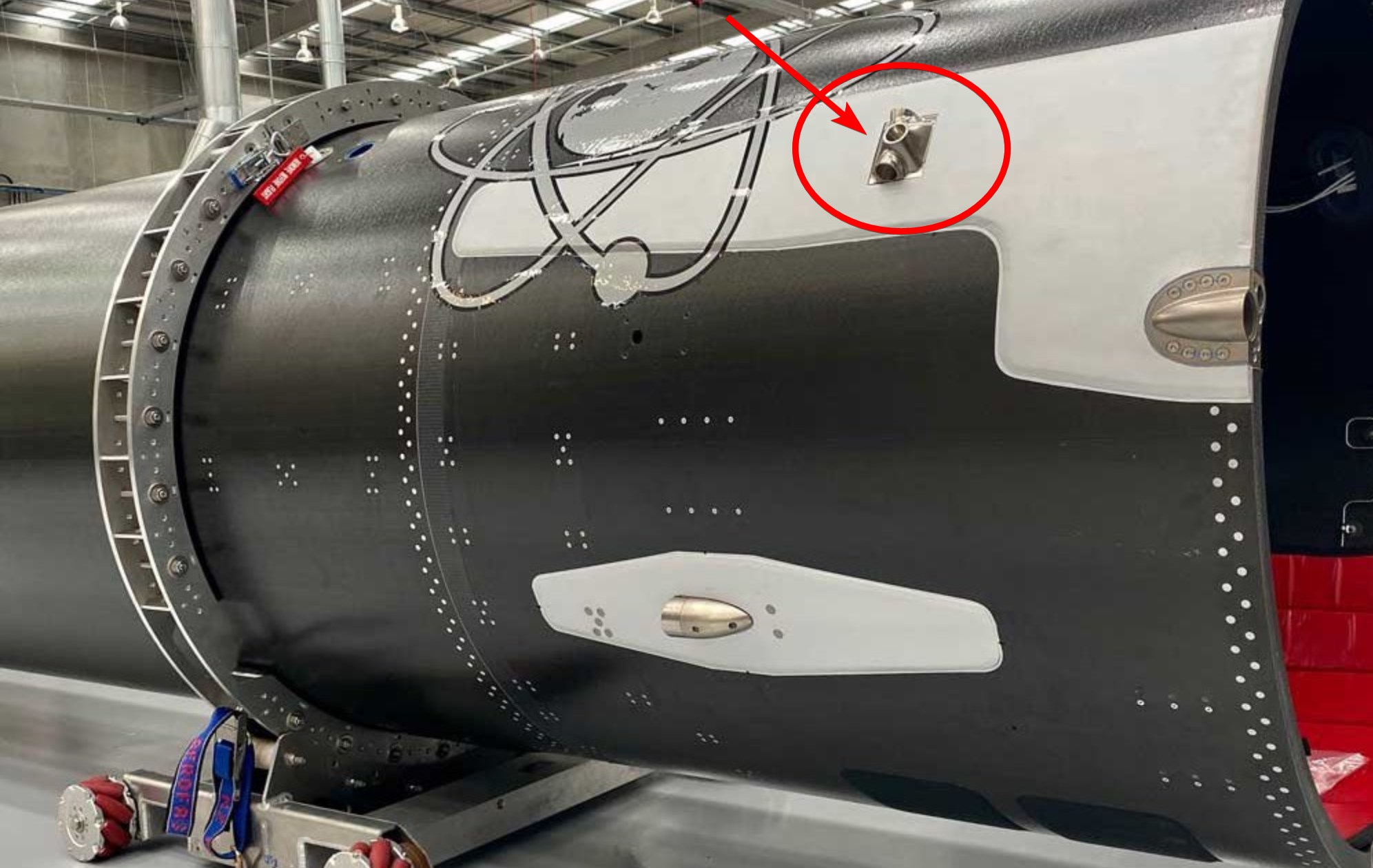

News
Rocket Lab’s reusable Electron rocket upgrade gets ready for its biggest test yet
Rocket Lab, the global leader in dedicated small satellite launches, has had quite the productive year, breaking ground on a new U.S.-based launch pad, successfully launching five orbital launches, and announcing plans to send small satellites and small payloads to lunar orbits.
The company also unexpectedly announced plans to attempt to recover and reuse Electron rocket boosters much like SpaceX’s Falcon 9, perhaps as soon as 2020. Just three months after that surprise, the company’s tenth Electron launch is on track to serve as a crucial step and flight test in pursuit of Rocket Lab’s very first booster recovery attempts.
Electron Flight 10 has slipped about a week but is now on track to lift off no earlier than 11:56 pm EST, November 28th (07:56 UTC, Nov 29).
Booster recovery – the new not new rocket version of reduce, reuse, recycle
Rocket Lab explained that recovery efforts would occur in two distinct phases. Phase 1 would involve recovering expended Electron boosters from the ocean off the coast of New Zealand and transporting back to the Rocket Lab’s headquarters for careful inspection. This process is reminiscent of previous practices completed by NASA during the shuttle era to retrieve the Shuttle’s Solid Rocket Boosters from the Atlantic Ocean. The boosters were retrieved and towed back to Port Canaveral, Florida to be inspected and refurbished at Kennedy Space Center.
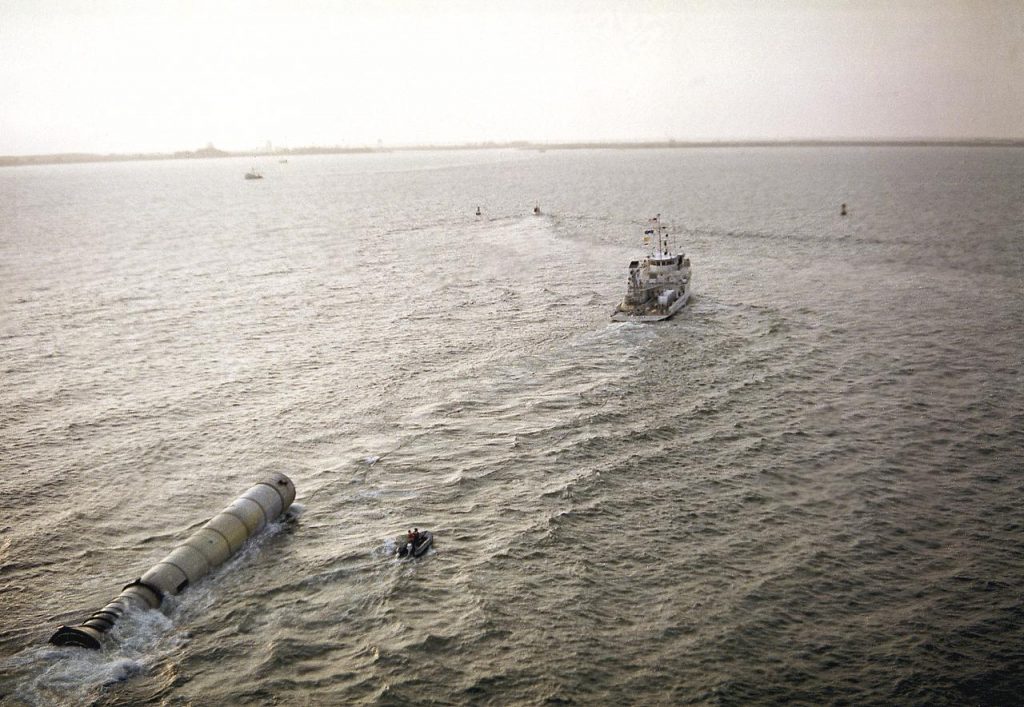
Although rocket booster recovery is not new in the world of orbital rocketry, it is a new objective for Rocket Lab. In fact, founder Peter Beck stated he would have to “eat his hat” after previously and repeatedly stating that Rocket Lab would never pursue reusability for Electron. After Phase 1, Rocket Lab hopes to attempt its first true Electron ‘catches’. Unlike competitor SpaceX, whose Falcon 9 and Heavy boosters land propulsively on land or sea-based landing pads, Rocket Lab has opted to pursue Electron recovery with parachutes and grappling hook-equipped helicopters.
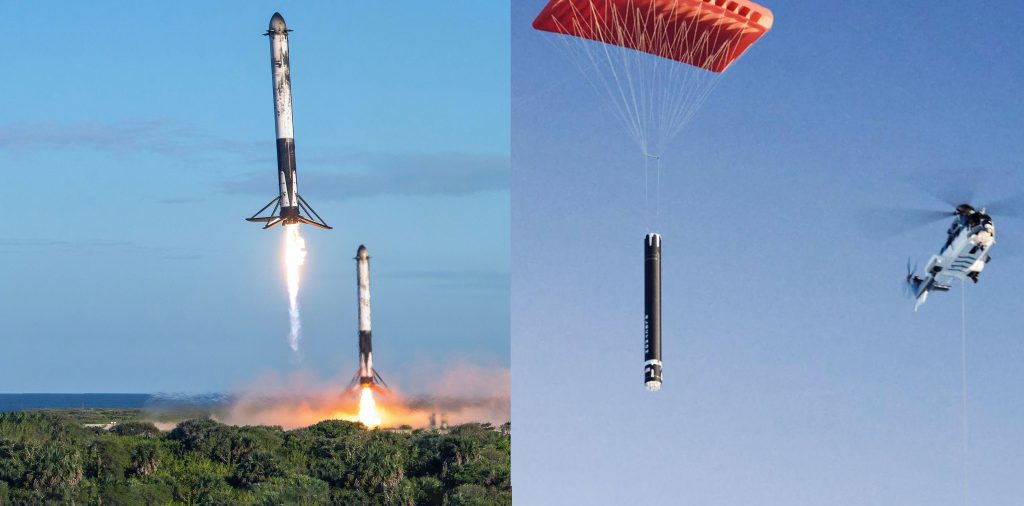
Electron’s upcoming tenth launch – nicknamed “Running Out of Fingers,” – will feature a new block upgrade for Electron’s first stage booster and will mark the first flight test of recovery hardware. Cold gas attitude control thrusters are the most obvious addition on the upgraded booster and will be used to orient Electron first stages in lieu of aerodynamic control surfaces like SpaceX’s iconic choice of grid fins. In a statement, however, Rocket Lab clarified that although the first stage includes new upgrades, it will only be used to gather data and inform future recovery efforts – no recovery attempts will be made after the next few launches.
Electron Flight 10 is a common rideshare mission that will place seven small satellites in orbit. Among the payloads is a rather fascinating spacecraft called the 2nd Satellite or ALE-2, built by the Tokoyo based ALE Company.
According to a statement posted to the company’s website, the spacecraft “will take on the challenge of materializing a [human]-made shooting star.” The spacecraft produced in conjunction with Spaceflight features four hundred spheres – each 1cm in diameter – that will be gradually ejected to burn up in Earth’s atmosphere, creating artificial shooting stars.
Behind the scenes at LC-1 and HQ
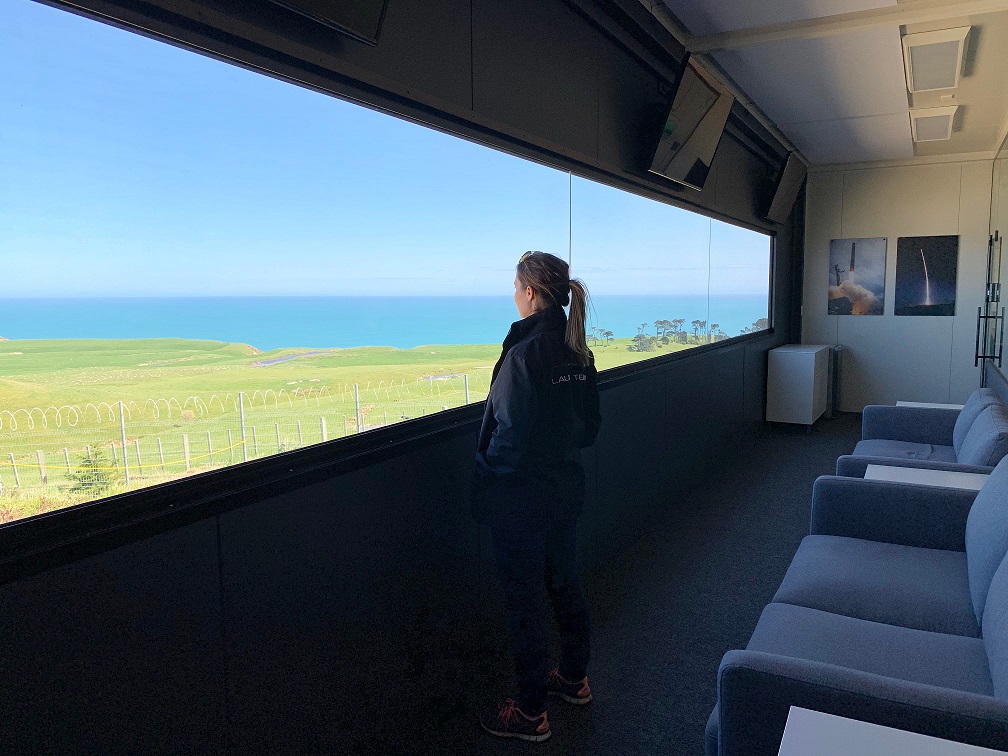
Ahead of the all-important tenth Electron launch, Rocket Lab treated its social media followers to some rare glimpses into the production process and the stunning Launch Complex-1 (LC-1) located on the Mahia Peninsula in New Zealand. A video posted to YouTube takes viewers on a digital tour around Launch Complex -1 as well as inside the Electron Production Complex.
In the Production Complex, a revolutionary robot named “Rosie” provides a level of automation that takes over the tedious work of processing a rocket body that has been traditionally completed by humans. Rosie the Robot is able to process an entire carbon composite shell of the Electron booster in just twelve hours. The automation machine also finishes out Rocket Lab’s Kick Stage and protective payload fairings. The piece of processing machinery will assist Rocket Lab in matching production and launch frequency of the Electron rocket with the 120 launches per year that LC-1 is licensed to support.
Rocket Lab’s tenth Electron launch is currently on track for Friday, December 6th from 0756-0922 GMT (2:56-4:22 a.m. EST).
News
Tesla UK sales see 14% year-over-year rebound in June: SMMT data
The SMMT stated that Tesla sales grew 14% year-over-year to 7,719 units in June 2025.

Tesla’s sales in the United Kingdom rose in June, climbing 14% year-over-year to 7,719 units, as per data from the Society of Motor Manufacturers and Traders (SMMT). The spike in the company’s sales coincided with the first deliveries of the updated Model Y last month.
Model Y deliveries support Tesla’s UK recovery
Tesla’s June performance marked one of its strongest months in the UK so far this year, with new Model Y deliveries contributing significantly to the company’s momentum.
While the SMMT listed Tesla with 7,719 deliveries in June, independent data from New AutoMotive suggested that the electric vehicle maker registered 7,891 units during the month instead. However, year-to-date figures for Tesla remain 2% down compared to 2024, as per a report from Reuters.
While Tesla made a strong showing in June, rivals are also growing. Chinese automaker BYD saw UK sales rise nearly fourfold to 2,498 units, while Ford posted the highest EV growth among major automakers, with a more than fourfold increase in the first half of 2025.
Overall, the UK’s battery electric vehicle (BEV) demand surged 39% to to 47,354 units last month, helping push total new car sales in the UK to 191,316 units, up 6.7% from the same period in 2024.
EV adoption accelerates, but concerns linger
June marked the best month for UK car sales since 2019, though the SMMT cautioned that growth in the electric vehicle sector remains heavily dependent on discounting and support programs. Still, one in four new vehicle buyers in June chose a battery electric vehicle.
SMMT Chief Executive Mike Hawes noted that despite strong BEV demand, sales levels are still below regulatory targets. “Further growth in sales, and the sector will rely on increased and improved charging facilities to boost mainstream electric vehicle adoption,” Hawes stated.
Also taking effect this week was a new US-UK trade deal, which lowers tariffs on UK car exports to the United States from 27.5% to 10%. The agreement could benefit UK-based EV producers aiming to expand across the country.
News
Tesla Model 3 ranks as the safest new car in Europe for 2025, per Euro NCAP tests
Despite being on the market longer than many of its rivals, the Tesla Model 3 continues to set the bar for vehicle safety.
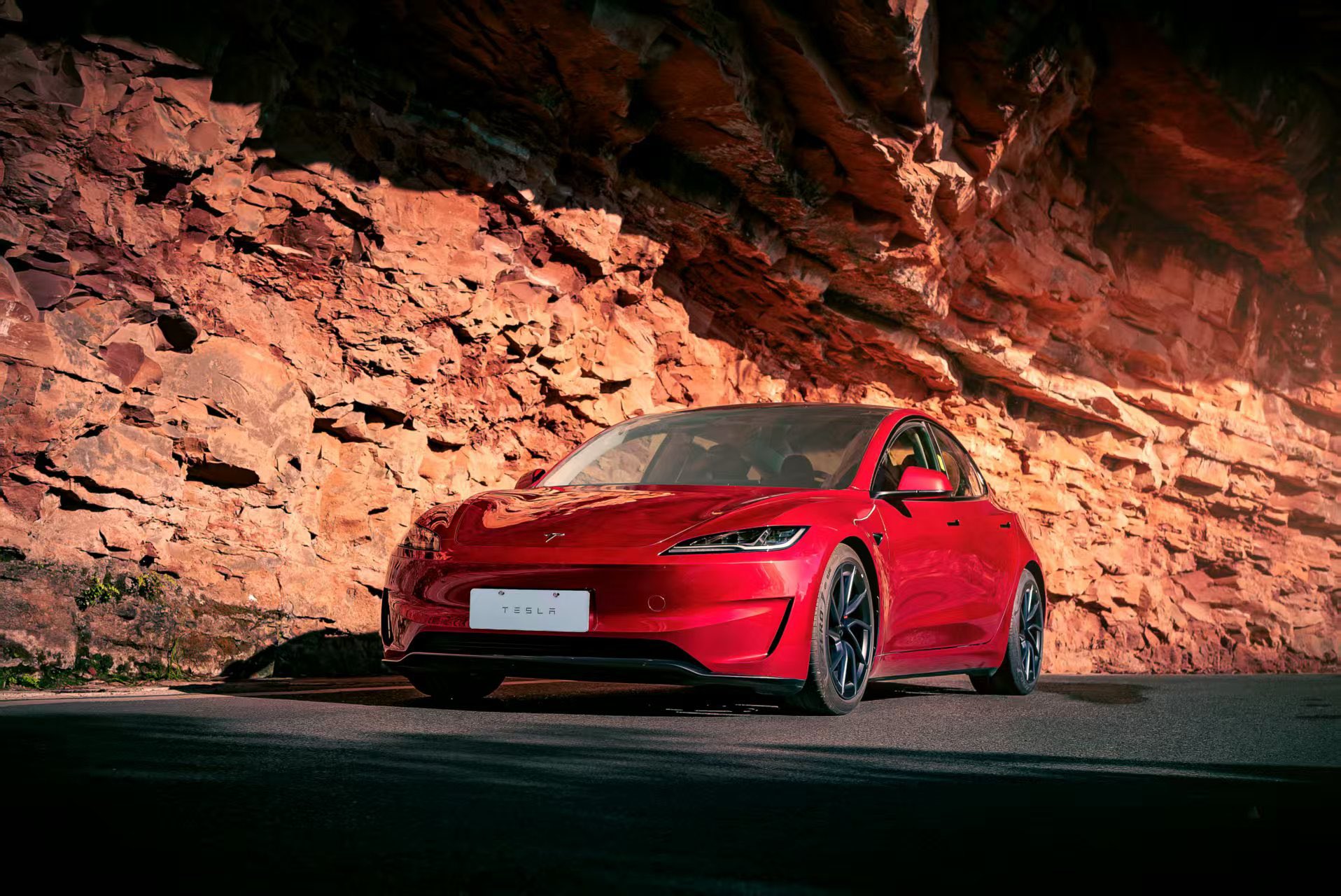
The Tesla Model 3 has been named the safest new car on sale in 2025, according to the latest results from the Euro NCAP. Among 20 newly tested vehicles, the Model 3 emerged at the top of the list, scoring an impressive 359 out of 400 possible points across all major safety categories.
Tesla Model 3’s safety systems
Despite being on the market longer than many of its rivals, the Tesla Model 3 continues to set the bar for vehicle safety. Under Euro NCAP’s stricter 2025 testing protocols, the electric sedan earned 90% for adult occupant protection, 93% for child occupant protection, 89% for pedestrian protection, and 87% for its Safety Assist systems.
The updated Model 3 received particular praise for its advanced driver assistance features, including Tesla’s autonomous emergency braking (AEB) system, which performed well across various test scenarios. Its Intelligent Speed Assistance and child presence detection system were cited as noteworthy features as well, as per a WhatCar report.
Other notable safety features include the Model 3’s pedestrian-friendly pop-up hood and robust crash protection for both front and side collisions. Euro NCAP also highlighted the Model 3’s ability to detect vulnerable road users during complex maneuvers, such as turning across oncoming traffic.
Euro NCAP’s Autopilot caution
While the Model 3’s safety scores were impressive across the board, Euro NCAP did raise concerns about driver expectations of Tesla’s Autopilot system. The organization warned that some owners may overestimate the system’s capabilities, potentially leading to misuse or inattention behind the wheel. Even so, the Model 3 remained the highest-scoring vehicle tested under Euro NCAP’s updated criteria this year.
The Euro NCAP’s concerns are also quite interesting because Tesla’s Full Self-Driving (FSD) Supervised, which is arguably the company’s most robust safety suite, is not allowed for public rollout in Europe yet. FSD Supervised would allow the Model 3 to navigate inner city streets with only minimal human supervision.
Other top scorers included the Volkswagen ID.7, Polestar 3, and Geely EX5, but none matched the Model 3’s total score or consistency across categories. A total of 14 out of 20 newly tested cars earned five stars, while several models, including the Kia EV3, MG ZS, and Renault 5, fell short of the top rating.
Elon Musk
Why Tesla’s Q3 could be one of its biggest quarters in history
Tesla could stand to benefit from the removal of the $7,500 EV tax credit at the end of Q3.

Tesla has gotten off to a slow start in 2025, as the first half of the year has not been one to remember from a delivery perspective.
However, Q3 could end up being one of the best the company has had in history, with the United States potentially being a major contributor to what might reverse a slow start to the year.
Earlier today, the United States’ House of Representatives officially passed President Trump’s “Big Beautiful Bill,” after it made its way through the Senate earlier this week. The bill will head to President Trump, as he looks to sign it before his July 4 deadline.
The Bill will effectively bring closure to the $7,500 EV tax credit, which will end on September 30, 2025. This means, over the next three months in the United States, those who are looking to buy an EV will have their last chance to take advantage of the credit. EVs will then be, for most people, $7,500 more expensive, in essence.
The tax credit is available to any single filer who makes under $150,000 per year, $225,000 a year to a head of household, and $300,000 to couples filing jointly.
Ending the tax credit was expected with the Trump administration, as his policies have leaned significantly toward reliance on fossil fuels, ending what he calls an “EV mandate.” He has used this phrase several times in disagreements with Tesla CEO Elon Musk.
Nevertheless, those who have been on the fence about buying a Tesla, or any EV, for that matter, will have some decisions to make in the next three months. While all companies will stand to benefit from this time crunch, Tesla could be the true winner because of its sheer volume.
If things are done correctly, meaning if Tesla can also offer incentives like 0% APR, special pricing on leasing or financing, or other advantages (like free Red, White, and Blue for a short period of time in celebration of Independence Day), it could see some real volume in sales this quarter.
You can now buy a Tesla in Red, White, and Blue for free until July 14 https://t.co/iAwhaRFOH0
— TESLARATI (@Teslarati) July 3, 2025
Tesla is just a shade under 721,000 deliveries for the year, so it’s on pace for roughly 1.4 million for 2025. This would be a decrease from the 1.8 million cars it delivered in each of the last two years. Traditionally, the second half of the year has produced Tesla’s strongest quarters. Its top three quarters in terms of deliveries are Q4 2024 with 495,570 vehicles, Q4 2023 with 484,507 vehicles, and Q3 2024 with 462,890 vehicles.
-

 Elon Musk4 days ago
Elon Musk4 days agoTesla investors will be shocked by Jim Cramer’s latest assessment
-

 News1 week ago
News1 week agoTesla Robotaxi’s biggest challenge seems to be this one thing
-

 Elon Musk2 weeks ago
Elon Musk2 weeks agoFirst Look at Tesla’s Robotaxi App: features, design, and more
-

 News2 weeks ago
News2 weeks agoSpaceX and Elon Musk share insights on Starship Ship 36’s RUD
-

 News2 weeks ago
News2 weeks agoWatch Tesla’s first driverless public Robotaxi rides in Texas
-
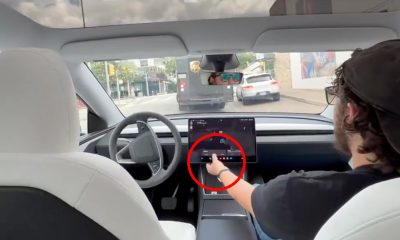
 News1 week ago
News1 week agoWatch the first true Tesla Robotaxi intervention by safety monitor
-

 News2 weeks ago
News2 weeks agoTesla has started rolling out initial round of Robotaxi invites
-

 Elon Musk2 weeks ago
Elon Musk2 weeks agoTesla to launch in India in July with vehicles already arriving: report








